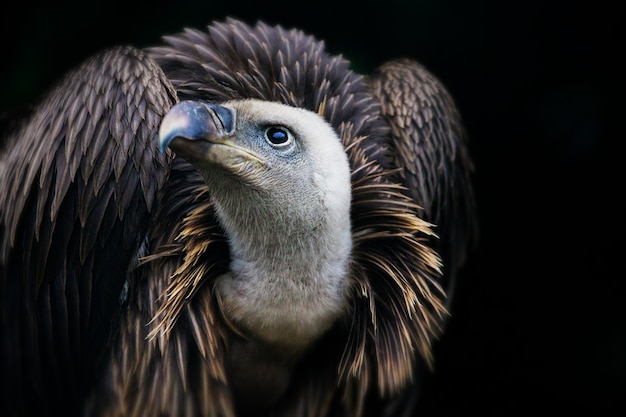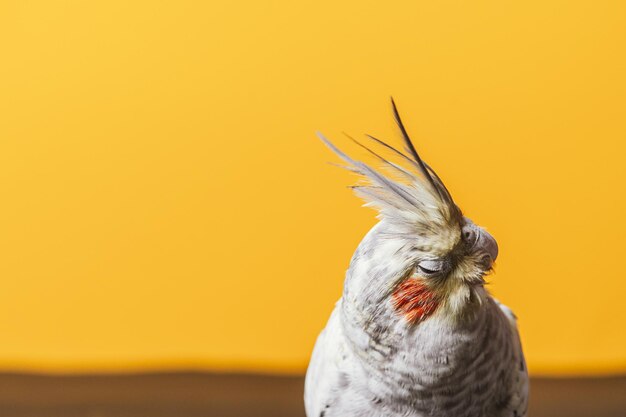Facts about the bald eagle

The bald eagle is not actually bald; it has white feathers on its head.
Bald eagles have a wingspan that can reach up to 7 feet.
These majestic birds can fly up to speeds of 30 miles per hour.
The bald eagle is the national bird and symbol of the United States.
They have excellent eyesight, with a range that allows them to see fish from several hundred feet above the water.
Bald eagles are primarily fish eaters and catch their prey by swooping down from their perches.
The average lifespan of a bald eagle in the wild is around 20 years, but they can live up to 40 years in captivity.
This species is a great example of biotic indicators, as their presence indicates a healthy ecosystem.
Bald eagles build the largest nests of any bird species, with some reaching up to 10 feet across and weighing up to a ton.
They are found only in North America, ranging from Alaska to Florida.
The bald eagle almost went extinct in the United States due to habitat destruction and hunting, but conservation efforts have helped its population recover.
Bald eagles are known for their incredible diving ability, plunging into water feet first to catch fish.
Male bald eagles are smaller than females, with a wingspan of around 6 feet compared to the female’s 7-foot wingspan.
They are territorial birds and will defend their nests and hunting areas fiercely.
Bald eagles are monogamous and typically mate for life.
Facts about the bald eagle part 2
Juvenile bald eagles don’t develop their iconic white head and tail feathers until they are around 5 years old.
They have an impressive lifespan compared to other bird species.
Bald eagles are known for their distinctive call, a high-pitched chirping sound.
These birds are skilled fliers, capable of soaring for hours without flapping their wings.
The feathers on their wings and tail are used to maintain their balance and maneuverability during flight.
Bald eagles have a unique adaptation in their feet, with long, sharp talons used for catching and holding onto prey.
They are opportunistic feeders and will scavenge on carrion if food is scarce.
The bald eagle was nearly chosen as the national symbol of the United States, losing to the wild turkey by one vote.
They have hollow bones that make them lightweight and enable them to fly more efficiently.
Bald eagles have an impressive diving speed of up to 99 miles per hour.
They are known to engage in a behavior called cartwheeling, where they lock talons with another eagle during a mid-air battle before spiraling downward towards the ground.
Bald eagles were once considered sacred by Native American tribes, symbolizing strength, courage, and freedom.
They have an exceptional grip strength, allowing them to carry heavy prey while in flight.
Bald eagles undergo molting, shedding old feathers and growing new ones, usually during the summer months.
They have a unique ability to swim, using their wings like oars to propel themselves through the water.
The bald eagle was officially removed from the endangered species list in 2007, marking a significant conservation success story.
These birds have a specialized respiratory system that allows for efficient delivery of oxygen during flight.
Bald eagles have been known to steal food from other birds, including ospreys.
They are incredibly agile, capable of making quick turns and sharp dives to catch their prey.
The bald eagle has been featured on the United States quarter since 1999.
They are powerful birds, capable of carrying prey weighing up to half of their body weight.
Bald eagles are known to engage in courtship displays, with aerial acrobatics and duets between mating pairs.
They have a long lifespan compared to other birds of prey, thanks to their excellent hunting skills and ability to adapt to changing environments.
Bald eagles have few natural predators, with humans being the biggest threat to their population.
They have been used in falconry throughout history due to their strength and majestic appearance.
Bald eagles are sensitive to pollution and habitat destruction, making them important indicators of environmental health.
These birds have a distinctive white head and tail, making them easily recognizable.
Bald eagles have a specialized digestive system that allows them to extract the nutrients from fish and discard the rest.
They are capable of flying at high altitudes, sometimes reaching heights of over 10,000 feet.
The bald eagle population in the United States is estimated to be around 70,000 individuals, thanks to successful conservation efforts.

